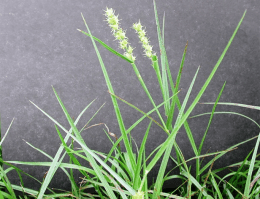Most Americans age 2 and older do not eat the recommended amounts of vegetables. It is important to add more veggies to our meals and snacks, as vegetables provide vitamins and minerals and most are low in calories and fat.
Vary your veggies. The most commonly eaten vegetables are potatoes and tomatoes according to the Dietary Guidelines for Americans. It is important to vary your veggies throughout the week by eating from the five vegetable subgroups: dark green, red and orange, legumes (beans and peas), starchy, and other vegetables.
These vegetables are grouped together based on their nutrient content. Most Americans do not eat enough of dark green, red and orange vegetables, and beans and peas. Try to focus on fitting more dark-green vegetables into your day.
4 Ways to Add More Dark Green Veggies
- Add spinach to a smoothie.
- Dip fresh broccoli in hummus, yogurt-based dip, or another low-fat dip.
- Not used to eating salads with leafy dark greens? Try mixing romaine lettuce, spinach, or baby kale with a lettuce you normally use.
- Liven up a pasta dish, stir fry, omelet, or salad by adding spinach or chopped broccoli.
See the recipe for Clover Power Smoothie. Try this simple green smoothie for a fun and festive way to add dark green vegetables by using spinach.
| VEGETABLE SUBGROUP | EXAMPLES |
| Dark Green | Broccoli, spinach, leafy salad greens (including romaine lettuce), collards, bok choy, kale, turnip greens, mustard greens, green herbs (parsley, cilantro) |
| Red and Orange | Tomatoes, carrots, 100% tomato juice, sweet potatoes, red peppers (hot and sweet), winter squash, pumpkin |
| Legumes (beans and peas) | Pinto, white, kidney, and black beans; lentils; chickpeas; lima beans (mature, dried); split peas; edamame (green soybeans) |
| Starchy | Potatoes, corn, green peas, lima beans (green, immature), plantains, cassava |
| Other | Lettuce (iceberg), onions, green beans, cucumbers, celery, green peppers, cabbage, mushrooms, avocado, summer squash (includes zucchini), cauliflower, eggplant, garlic, bean sprouts, olives, asparagus, peapods (snowpeas), beets |
By: Jamie Rathbun
 Acute Stress – Is often sudden, generally short-lived physical or emotional challenge or threat. For example: theft, car accident, giving a speech or a wedding.
Acute Stress – Is often sudden, generally short-lived physical or emotional challenge or threat. For example: theft, car accident, giving a speech or a wedding.



